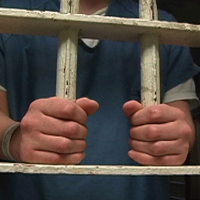As Prison Size Goes in Wrong Direction, Counties Push Back Against State Realignment

County officials, overwhelmed by the state’s three-year-old realignment that shifted the assignment of convicted criminals from overcrowded state prisons to local probation and jail, are fighting back.
One month after a panel of federal judges gave California another two years to reduce the population of its prisons to a beefy 137.5% of designed capacity, the Associated Press crunched numbers illuminating one impediment to reaching that goal.
County prosecutors are exercising their discretion and charging more offenders with second felonies, mandating a prison term and helping thwart state efforts to direct less dangerous felons to county control. AP reporter Don Thompson wrote that second-strike convictions had been on the decline since 1999, until realignment took hold in 2011.
Although the second strike may be less serious and not violent, it still qualifies the criminal for prison time. AP calculated that prosecutors sent 5,500 more second-felony criminals to prison in 2013-14 than the previous fiscal year, a 33% increase. So instead of the prison population of 133,000 declining, it is projected to hit 143,000 by June 2019.
The federal judges want the prison population reduced to 112,000.
Realignment guidelines are expanding the number of county jail inmates and probationers that must be overseen at the local level, while state funding to facilitate the transition remains a work in progress. A San Joaquin public defender told AP that has engendered a backlash. “Instead of kind of helping the governor to comply with the three-judge court, the attitude has just been, ‘Let’s keep sending the same number to prison,’ ” PD Peter Fox said.
Prosecutors aren’t the only ones contributing to the sorry numbers. Relying on an analysis by the California Department of Corrections and Rehabilitation (CDCR), AP said the average prison sentence has increased 3.3 months since 2011. Even as sentences for violent crimes decreased, sentences for non-violent crimes, including drugs, increased.
When the federal judges agreed to give California two more years, after multiple busted deadlines and spirited resistance from the Brown administration, it was on condition that prisons would slim down through amped-up state efforts to reduce recidivism and implement measures long sought by reformers.
Among them: an expanded parole process for medically incapacitated inmates; an accelerated parole process for eligible non-violent prisoners; a new parole policy for inmates over 60 years of age who have served 25 years of their sentence; expanded alternative custody program for women; and the provision of more time off for good behavior for non-violent second-strikers.
As state and county officials respond to realignment and vie for limited judicial and law enforcement resources, there is no official evidence that realignment is affecting the crime rate.
A study (pdf) released by the Center of Juvenile and Criminal Justice in January found “no conclusive trends demonstrating a causal relationship between Realignment and crime.”
“Crime trends varied erratically” between the 58 counties. Madera County was way up and Placer County was way down. There was “no difference in violent crime rates between high realignment and low realignment counties.” The report warned lawmakers against listening to “narrow and anecdotal evidence” and encouraged them to do a better job of measuring what effects their policies are having.
–Ken Broder
To Learn More:
Counties Undermine Prison Efforts (by Don Thompson, Associated Press)
No Link Between California’s Prison Realignment and Increased Crime, Study Says (by Beatriz Valenzuela, Long Beach Press-Telegram)
Judges Give Overcrowded, Unhealthy California Prisons a Two-Year Reprieve (by Ken Broder, AllGov California)
California’s 58 Crime Rates: Realignment and Crime in 2012 (by Mike Males and Brian Goldstein, Center on Juvenile and Criminal Justice) (pdf)
- Top Stories
- Controversies
- Where is the Money Going?
- California and the Nation
- Appointments and Resignations
- Unusual News
- Latest News
- California Forbids U.S. Immigration Agents from Pretending to be Police
- California Lawmakers Urged to Strip “Self-Dealing” Tax Board of Its Duties
- Big Oil’s Grip on California
- Santa Cruz Police See Homeland Security Betrayal in Use of Gang Roundup as Cover for Immigration Raid
- Oil Companies Face Deadline to Stop Polluting California Groundwater





